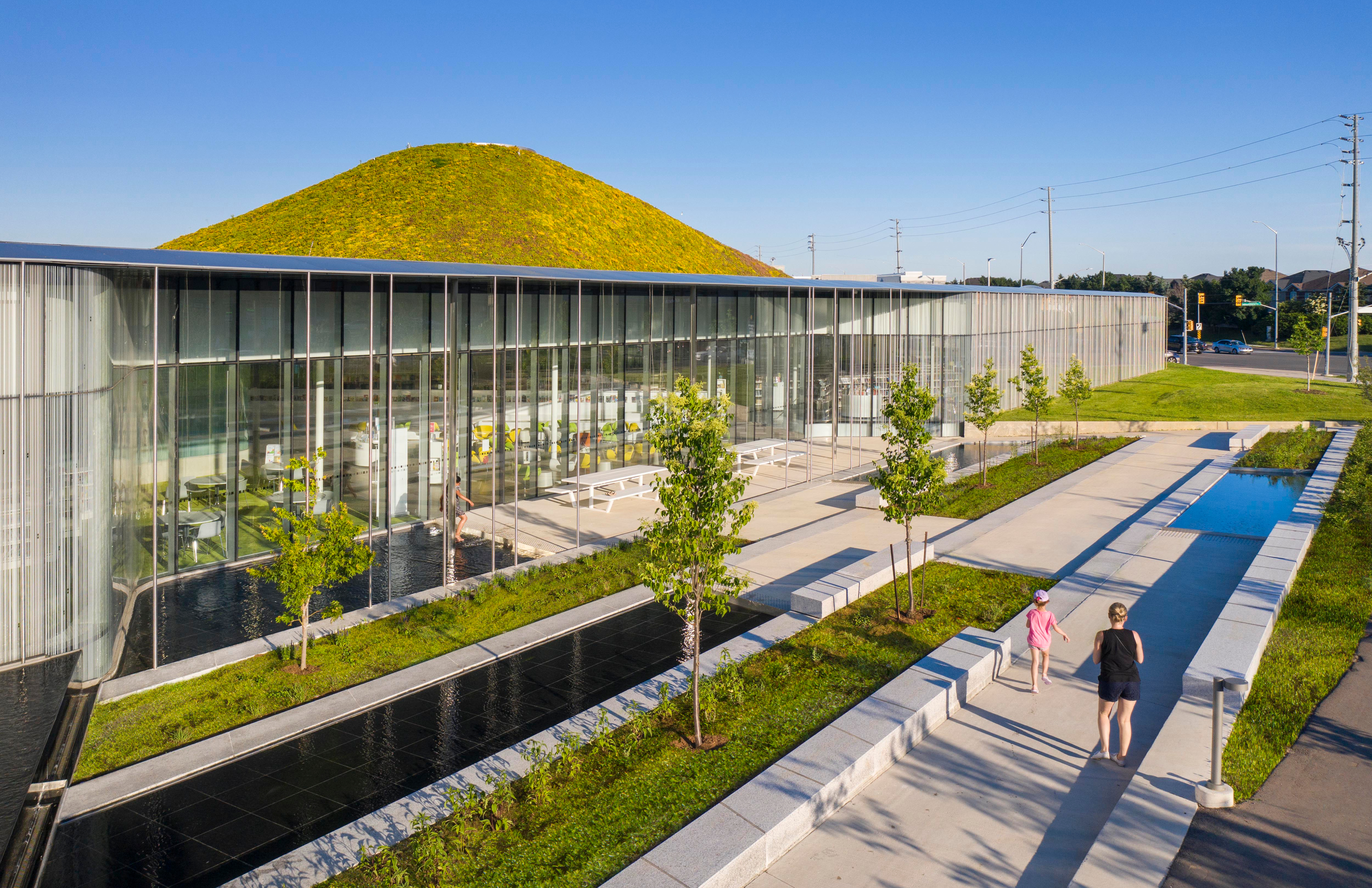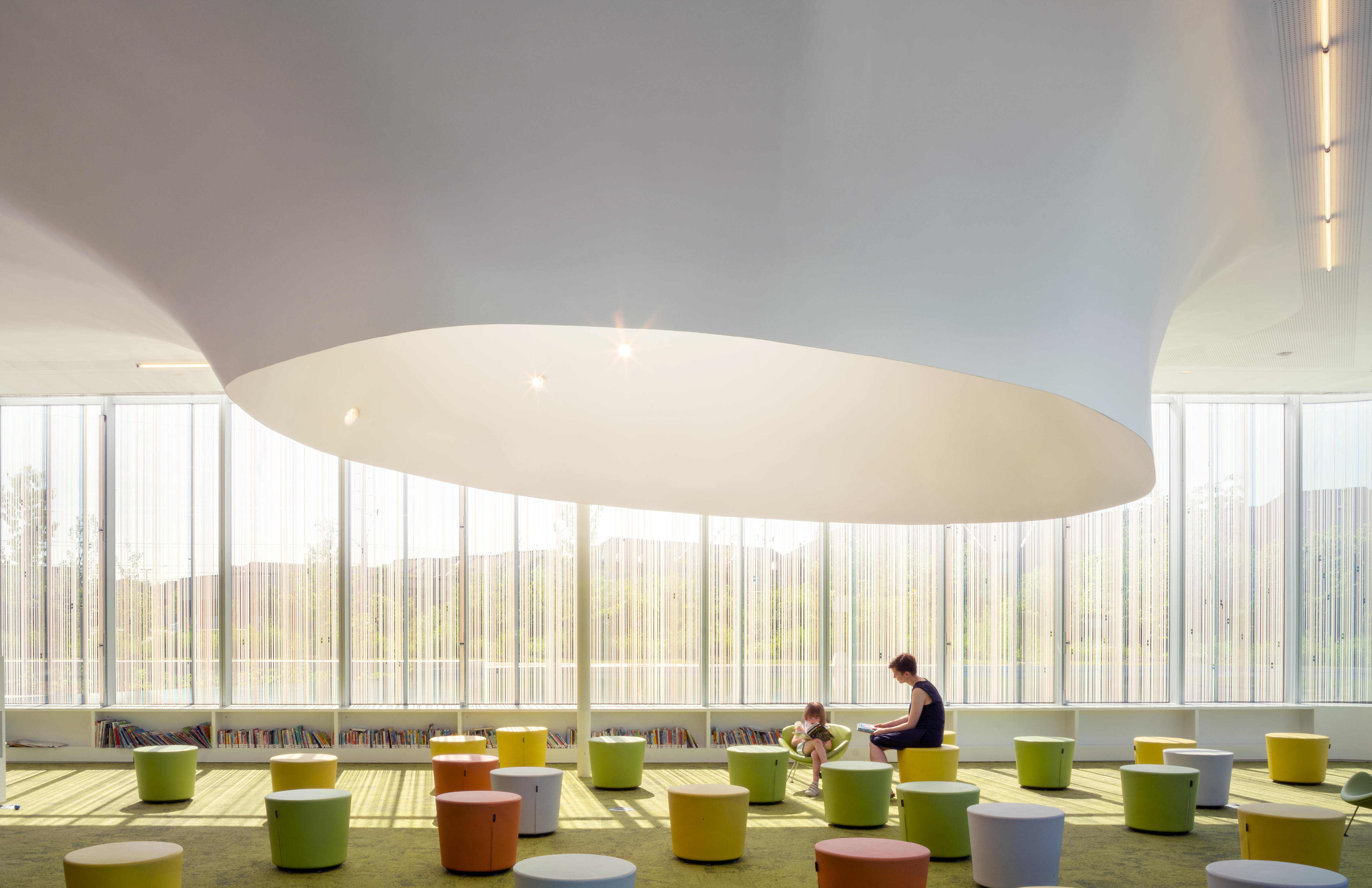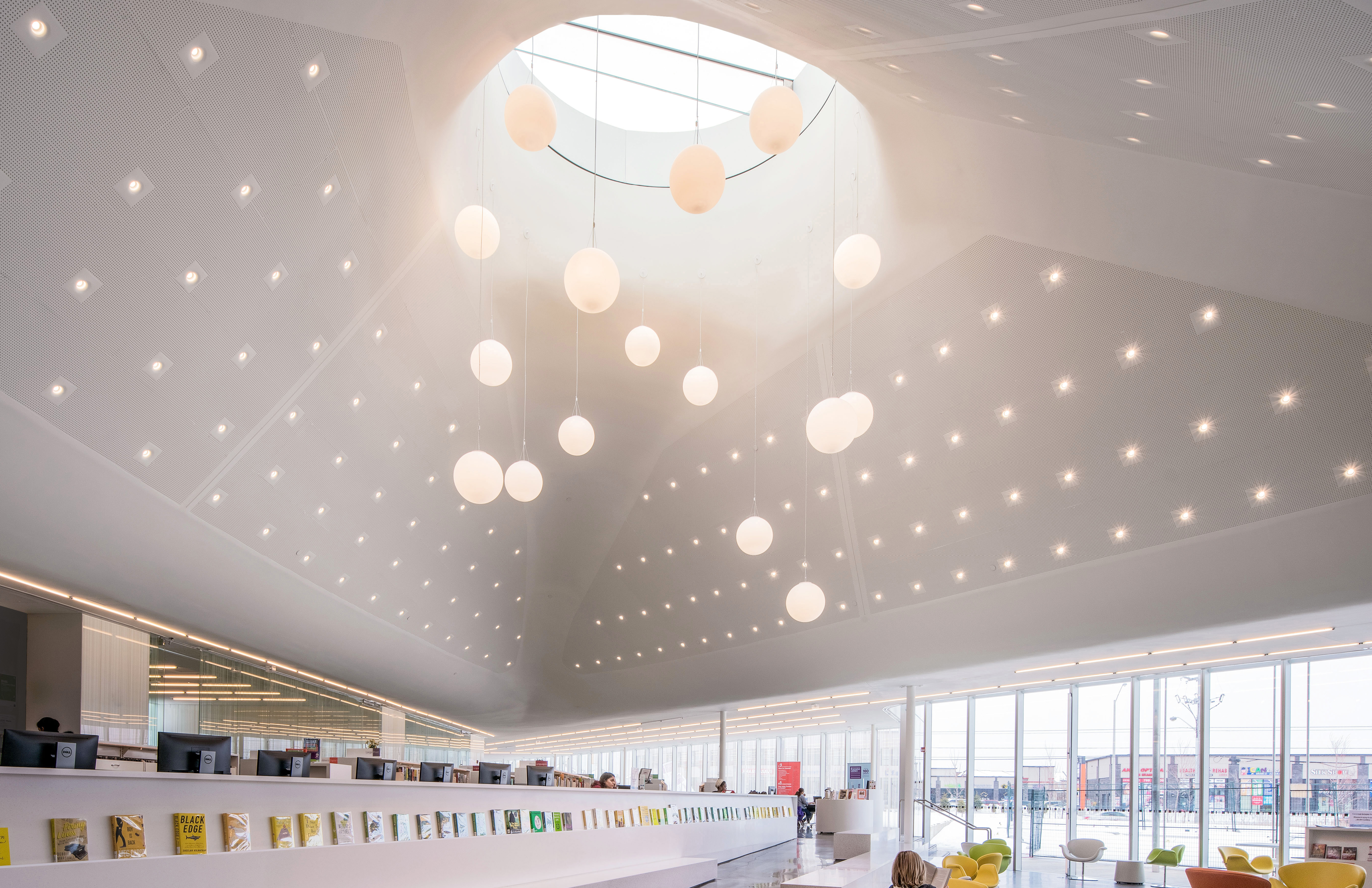Project Location: Brampton, Ontario
Project Architect(s): RDH Architects Inc.
Project Owner(s): The City of Brampton and The Brampton Library
Project Completion Date: 2019/Jul/06
Building Gross Floor Area: 25,080 sq. ft.
Energy Use Intensity (EUI) (ekWh/m2/year) : 178.5 kWh/m2
Greenhouse Gas Intensity (GHGI) (tCO2e): -
The Springdale Library and Komagata Maru Park in Brampton, designed by RDH Architects, aspires to create an inclusive gathering place, a progressive architectural expression in the suburbs, and a point of pride for the city. The concept for this project is to establish a new type of suburban landscape through the organically shaped perimeter of the building; the creation of an undulating topography of fluid ceilings and mountainous green roof; and the sectional variation of the ground plane. The new Springdale branch provides Brampton with an emboldened organic presence and a sustainable public resource for the community.
In an attempt to connect this building to the landscape on which it sits, the concept for the building utilizes two primary devices: first, the notion of an organic, undulating perimeter condition of building and courtyard; and second, the creation of an artificial topography within the flat landscape of the park; within the floor slab of the interior; and within the ceiling and roof plane of the library structure. The office explored an array of new complex geometries, digital software, and constructional systems to aid in the development of the design and construction of this library.

Building Orientation and Layout
The building’s immediate suburban neighbourhood is primarily suburban residential context to the north, west and south, and suburban commercial context to the east. As the site has proximity to both Bramalea and sandalwood, there is clear vehicular access to the site. These two thoroughfares also provide public bus transportation and sidewalks to promote pedestrian activity. A natural ravine curves along the northern and western boundaries of the site. This ravine exists as part of a larger system of green corridors which naturally occur through the greater municipal area.

Energy
The Springdale Library and Komagata Maru Park has been designed to achieve LEED Gold certification. The design integrates the following sustainable initiatives: geothermal heating and cooling, low-VOC materials, incorporation of custom ceramic pattern that expands and contracts to deal with varying degrees of solar radiation on each side of the building, extensive green roofs, planted/shaded parking areas, bio-swales, use of locally available materials and vegetation, and a rainwater collection system that provides greywater for toilets, reflecting pools, irrigation, and the community splash pad.

Project Team
Lead Architect: Tyler Sharp
Mechanical: Jain Consultants
Electrical: Jain Consultants
Structural: WSP Canada Inc.
Interiors: RDH Architects
LEED Consultant: Jain Consultants
Landscape: NAK Design Strategies
Civil: Valdor Engineering Inc.
Managing Principal: Bob Goyeche
Project Manager: Sanjoy Pal
Water Features Consultant: Resicom
Specifications: DGS Consulting Services